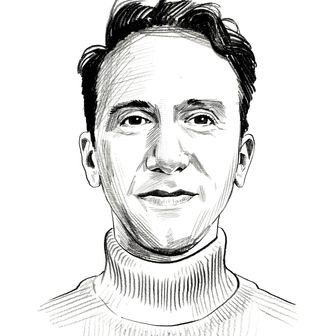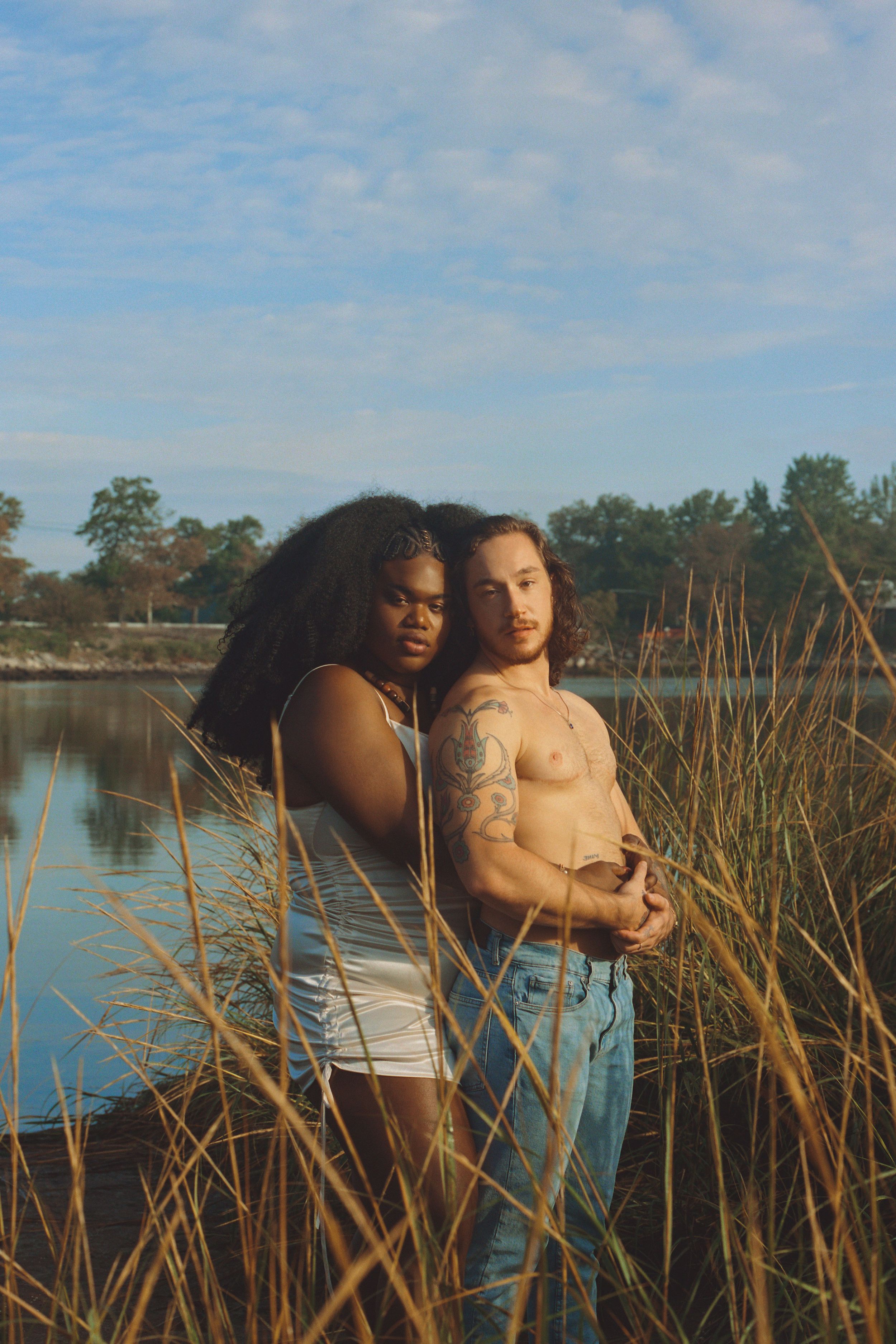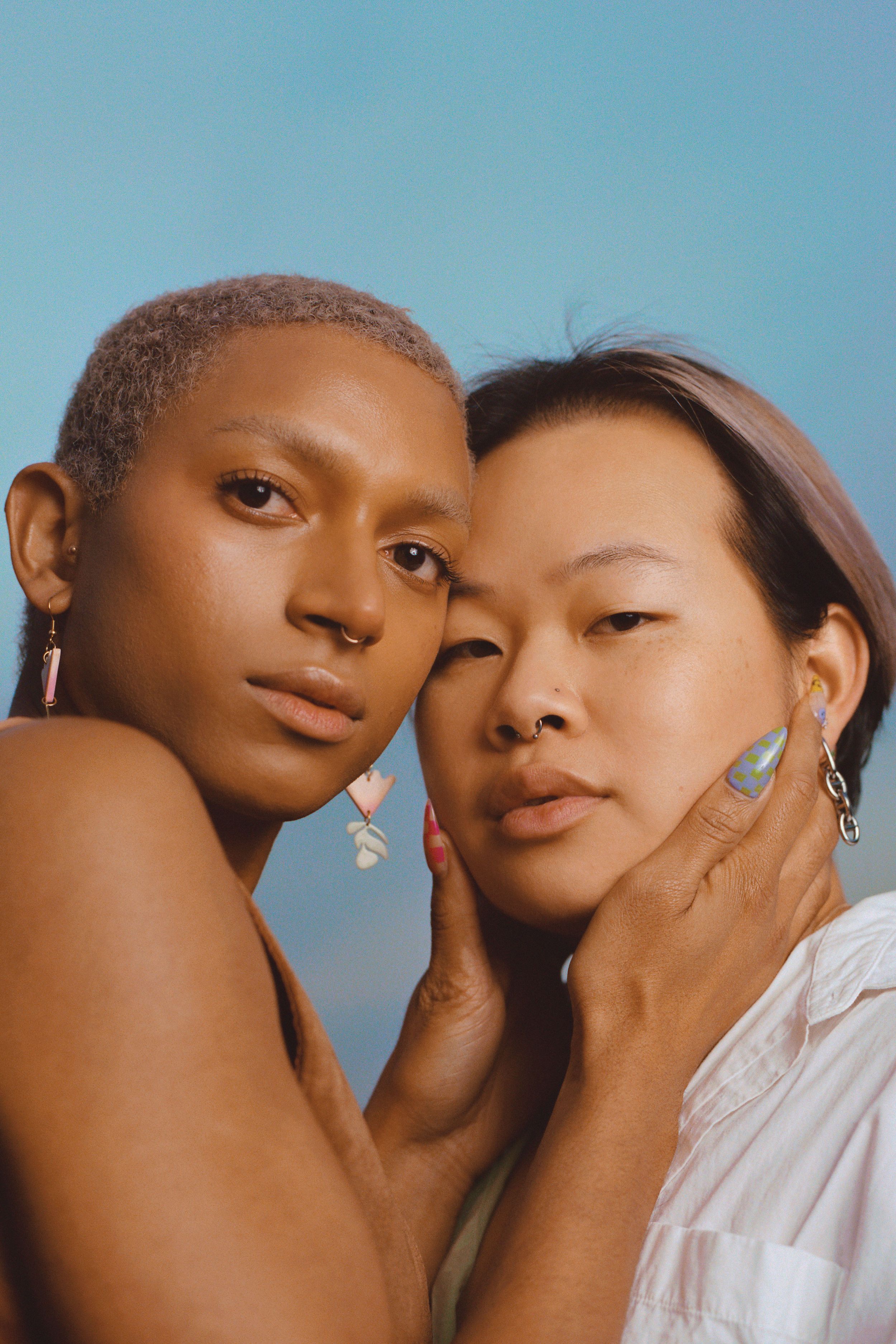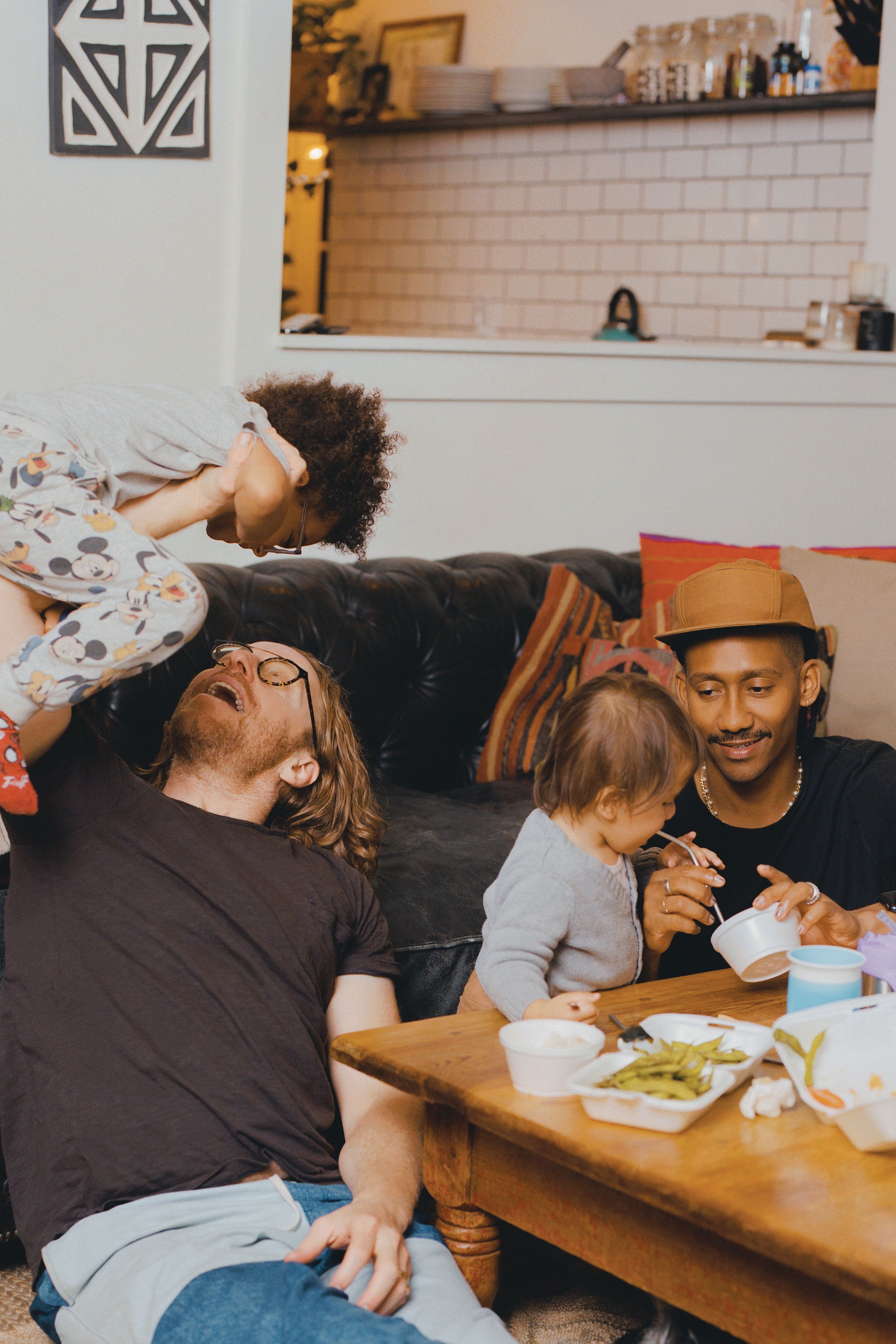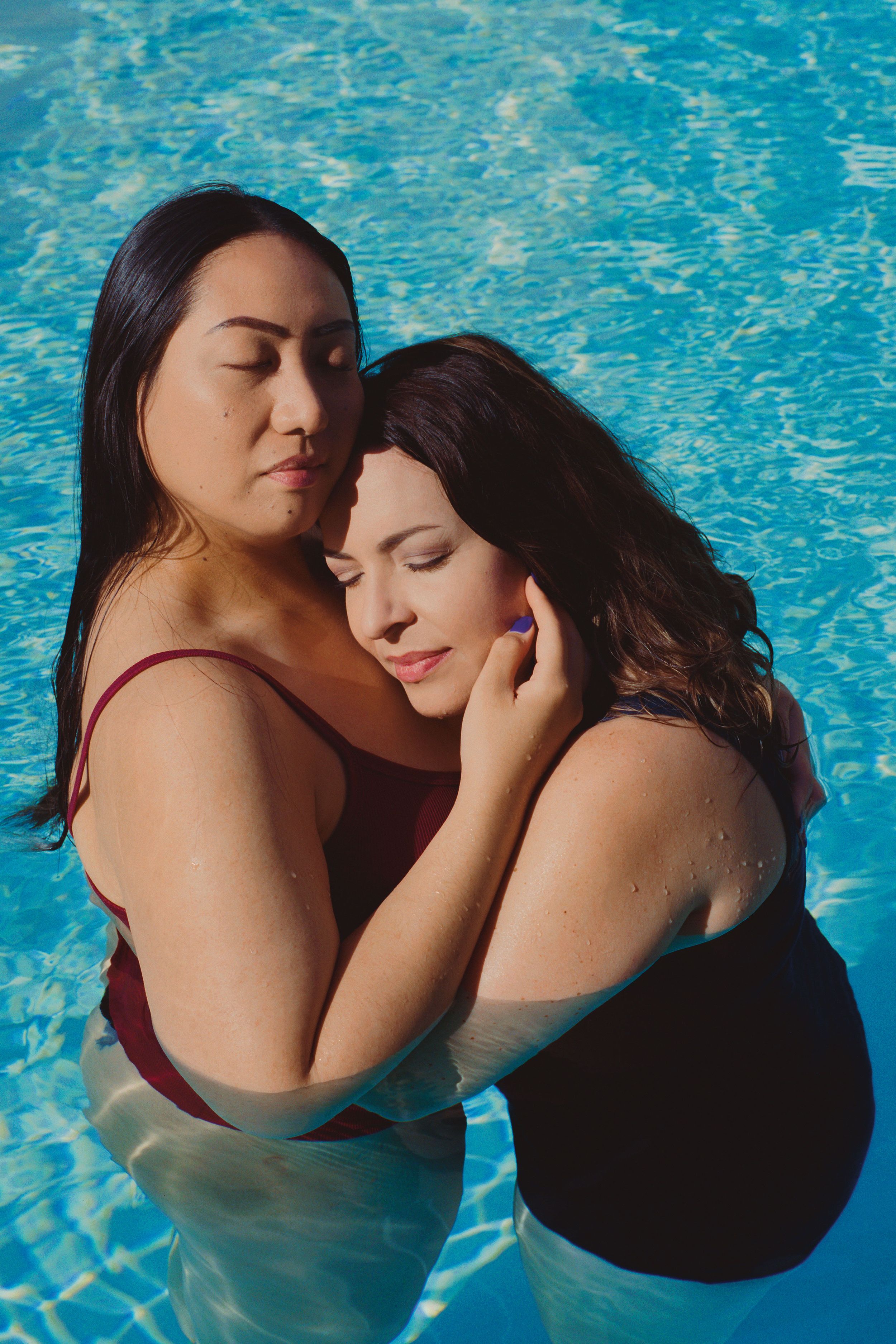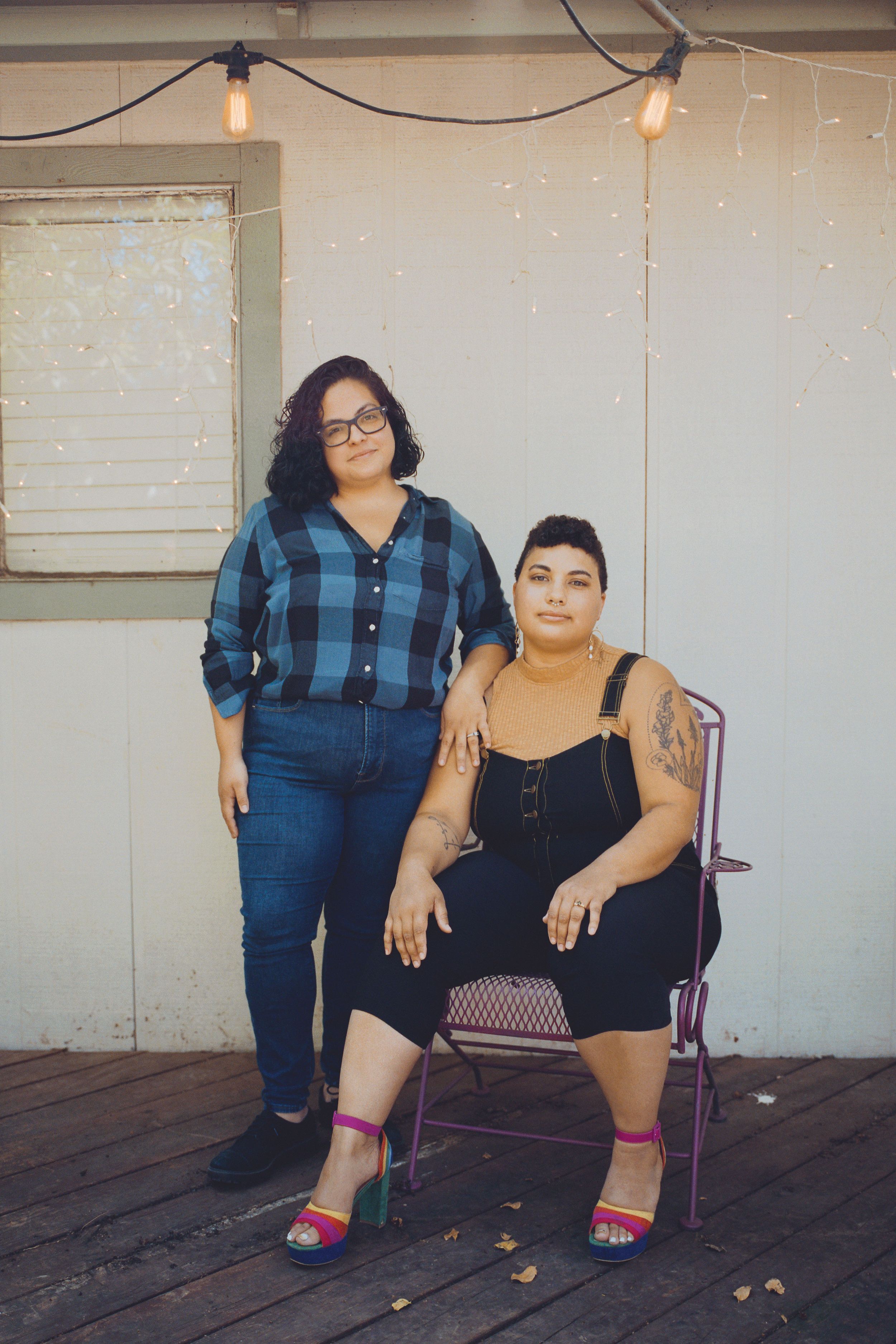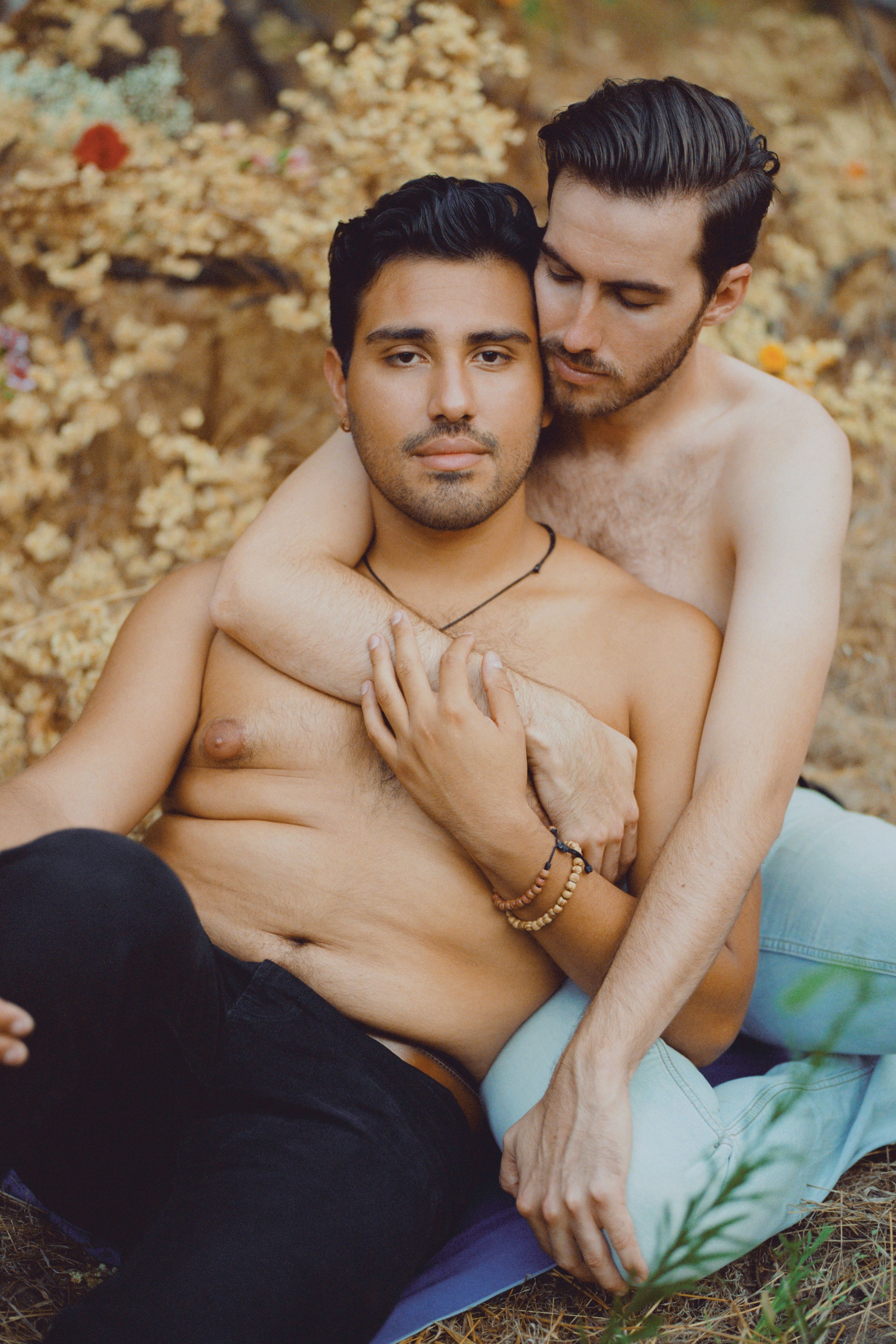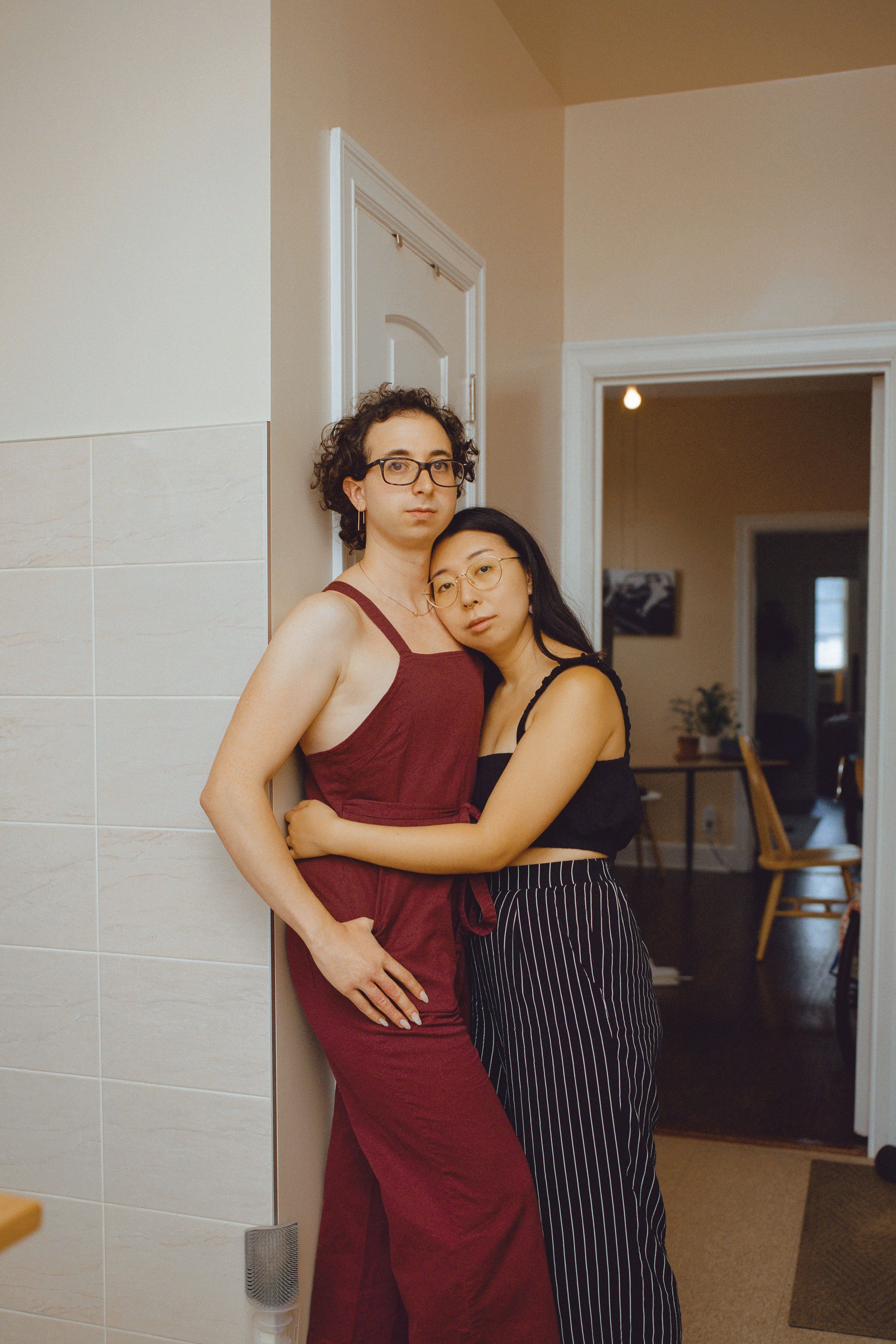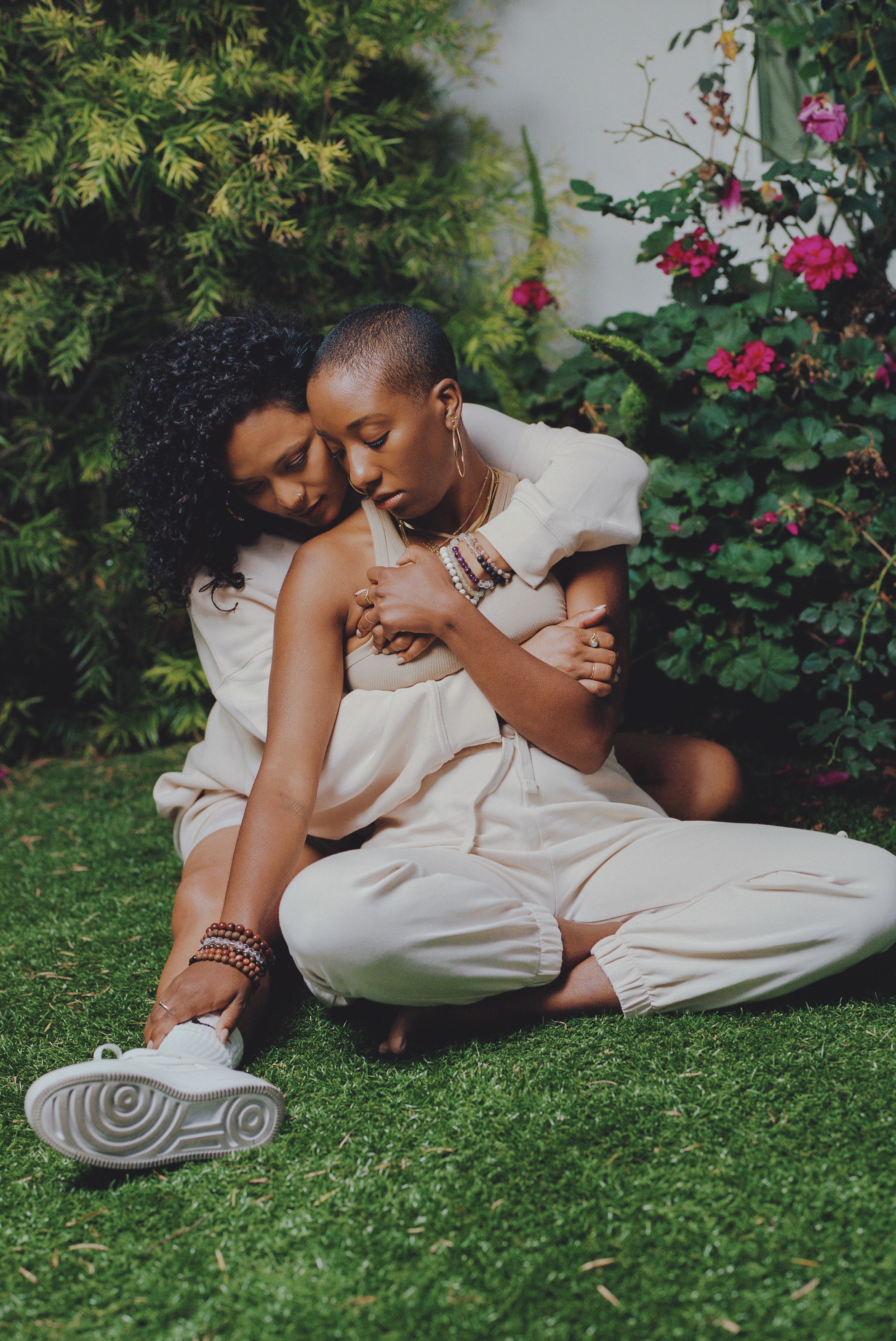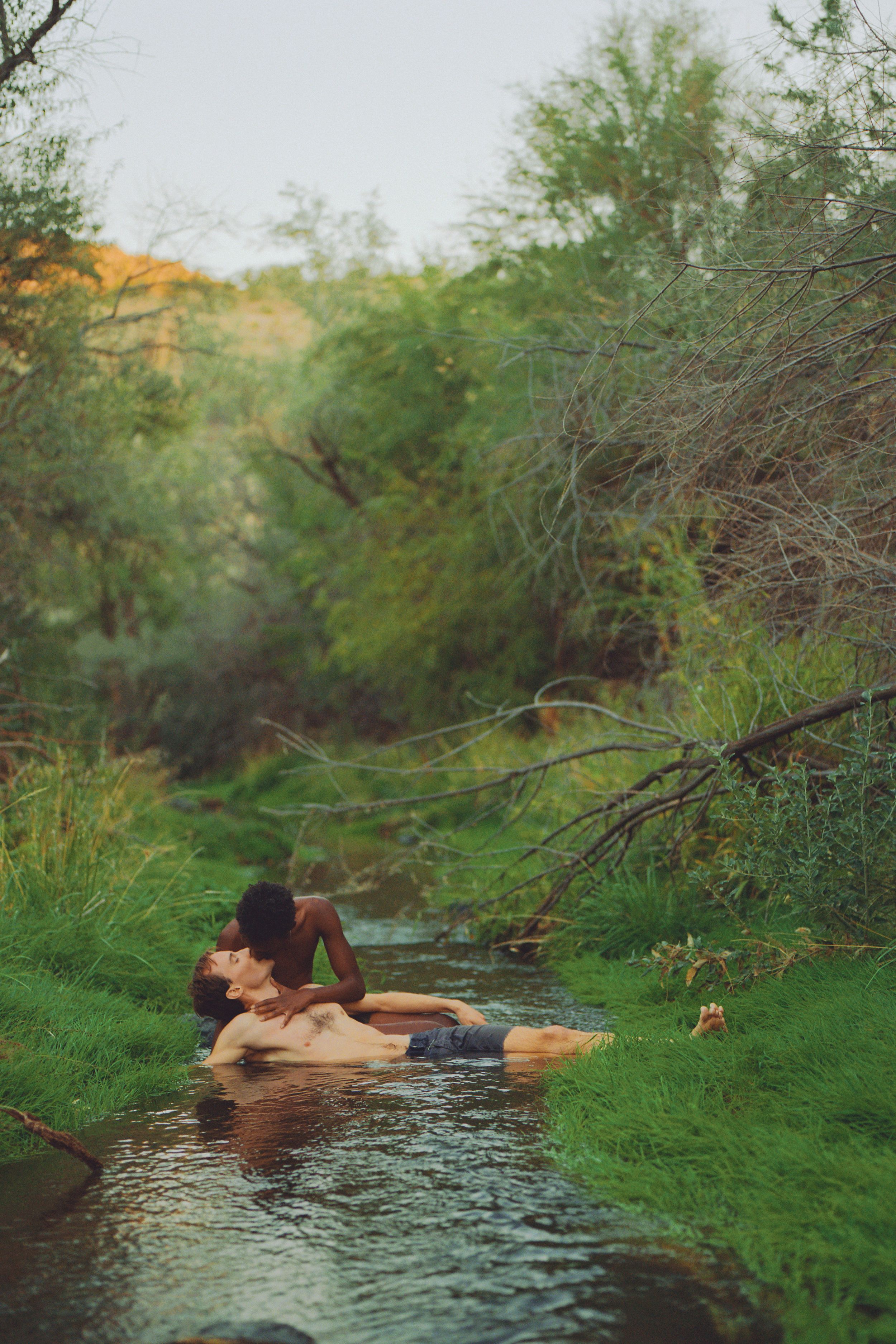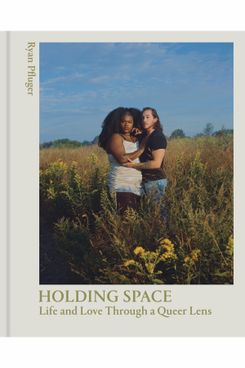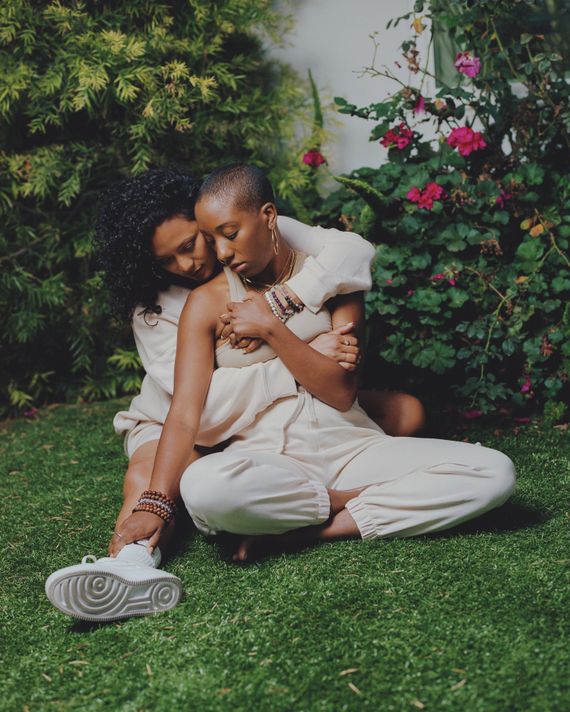
In the United States, LGBTQ rights are being targeted and suppressed right before our eyes. It’s a jarring time, so much so that even a glimpse of queer love can feel like a radical balm. Los Angeles–based photographer Ryan Pfluger aims to provide that salve with his new book, Holding Space: Life and Love Through a Queer Lens. The monograph showcases 100 tender stories and images of queer interracial couples across the U.S. as they navigate power dynamics, difficult conversations, and joy in their relationships. By leaning in to the vulnerability of intimacy, Pfluger suggests, we can fortify ourselves for the fights for justice to come.
The idea for this photo book percolated in Pfluger’s mind for over a decade. Since he pivoted from studying art history to photography in college, his commissioned work has been published seemingly everywhere: on the cover of The Hollywood Reporter and in the New York Times, capturing gentle moments with the likes of Barack Obama, Lady Gaga, and the cast of Yellowjackets. During the pandemic, Pfluger returned to the roots of his photography practice by embarking on self-funded road trips across the U.S., mapping queer America and turning his lens to interracial, noncelebrity couples. “I like that there’s a slight sense of self-consciousness when it comes to real people who aren’t models that allow barriers to be broken down,” he tells the Cut over Zoom.
Holding Space is a truly collaborative work. Pfluger says the book allowed him to “release the power structure of the photographer” and placed him in the position of facilitator rather than director. Each couple decided where they would be photographed and shared their intimate stories, which are printed alongside the final images in the book. Even the monograph’s alphabetical order decenters the photographer as curator, placing power back in the hands of his collaborators. Think Humans of New York without the trauma porn, “allowing the people I was photographing to have the majority control of their narrative, which is really rare, especially in marginalized communities,” Pfluger explains.
The photographer’s focus on interracial couples comes out of his own experience with relationships, but was further contextualized during the racial discourse bubbling to the surface in the summer of 2020. “I knew it was prime time for these kinds of conversations to start happening,” says Pfluger. Over 145 couples were originally photographed for the project, but as the date of publication approached, couples broke up and withdrew their participation. “It’s one thing to love another person; it’s another thing to be able to deeply connect with them,” he says. “On some things you’ll never be able to connect. I was really interested in what that looked like and how couples navigate that, especially within private and public spheres.”
Scroll below for some excerpted images and quotes from Holding Space, as well as Pfluger’s exploration of the process of selecting nine of the couples included in the book.
Pfluger tells the Cut he knew from the project’s inception that he wanted a Black trans woman on the book’s cover.
“What kind of couple didn’t matter to me. I also wanted to allude to Americana, to pastoral paintings and what American art has looked like over the years,” Pfluger recalls.
Christani: “Together, we created a healing space where we uplift and protect all the versions of ourselves that exist beyond the binary and white imagination. For us, being together means celebrating our identities and seeing each other fully in a world that doesn’t acknowledge us. It also means being conscious of how power dynamics show up in our relationship.”
At the time of this photo shoot, Matt and Griffin had not yet legally adopted the two foster children they had raised. There was uncertainty about whether the children’s faces could be published in the book.
Matt: “Each of us in this picture — whether by choice or by circumstance — was brought together to be new: to escape broken families or to envision how we can improve what we came from.”
This image was taken on a sunny day in Los Angeles in the couple’s apartment-building pool. “There are a lot of conversations in the book about public and private. The comfortability in one’s home is often very different than being outside in public with a partner,” Pfluger says.
Couples in Holding Space were predominantly photographed in New York and California, with Austin being the third-most frequently represented city.
“This book is a chapter in a much larger quest that I have of understanding queer Americana, which I feel like is something that isn’t talked about too much, of how different it is based on geography,” Pfluger says.
“They were one of the first couples I photographed for the book,” Pfluger says. “The reason why there are so many images outdoors was because of COVID. It was where they wanted to be photographed, a space where they went hiking together. I loved how open they were with their bodies. By not curating the book, I was a little nervous it was going to be a certain type of body. When you’re making something that’s about intersectionality and then you don’t have certain things, it’s hard to have these conversations.”
Michelle: “I’ve given myself a lot more space to think more deeply about gender and my own queerness. I’m still trying to understand what these words mean to me, but I’m happy I can say I have someone who is both my best friend and partner to be here with me as I explore questions about my identity.”
Pfluger’s signature visual style is quiet, still, and reflective. “I like giving that semblance of calm, even if it’s slightly sexual or even a spontaneous joyous moment,” he says.
“My work has always been about these large quantities of people and putting myself in people’s lives,” Pfluger explains. “I just think there’s something really special about the act of photographing someone that is unlike anything else.”
Pfluger tells the Cut he knew from the project’s inception that he wanted a Black trans woman on the book’s cover.
“What kind of couple didn’t matter to me. I also wanted to allude to Americana, to pastoral paintings and what American art has looked like over the years,” Pfluger recalls.
Christani: “Together, we created a healing space where we uplift and protect all the versions of ourselves that exist beyond the binary and white imagination. For us, being together means celebrating our identities and seeing each other fully in a world that doesn’t acknowledge us. It also means being conscious of how power dynamics show up in our relationship.”
At the time of this photo shoot, Matt and Griffin had not yet legally adopted the two foster children they had raised. There was uncertainty about whether the children’s faces could be published in the book.
Matt: “Each of us in this picture — whether by choice or by circumstance — was brought together to be new: to escape broken families or to envision how we can improve what we came from.”
This image was taken on a sunny day in Los Angeles in the couple’s apartment-building pool. “There are a lot of conversations in the book about public and private. The comfortability in one’s home is often very different than being outside in public with a partner,” Pfluger says.
Couples in Holding Space were predominantly photographed in New York and California, with Austin being the third-most frequently represented city.
“This book is a chapter in a much larger quest that I have of understanding queer Americana, which I feel like is something that isn’t talked about too much, of how different it is based on geography,” Pfluger says.
“They were one of the first couples I photographed for the book,” Pfluger says. “The reason why there are so many images outdoors was because of COVID. It was where they wanted to be photographed, a space where they went hiking together. I loved how open they were with their bodies. By not curating the book, I was a little nervous it was going to be a certain type of body. When you’re making something that’s about intersectionality and then you don’t have certain things, it’s hard to have these conversations.”
Michelle: “I’ve given myself a lot more space to think more deeply about gender and my own queerness. I’m still trying to understand what these words mean to me, but I’m happy I can say I have someone who is both my best friend and partner to be here with me as I explore questions about my identity.”
Pfluger’s signature visual style is quiet, still, and reflective. “I like giving that semblance of calm, even if it’s slightly sexual or even a spontaneous joyous moment,” he says.
“My work has always been about these large quantities of people and putting myself in people’s lives,” Pfluger explains. “I just think there’s something really special about the act of photographing someone that is unlike anything else.”


